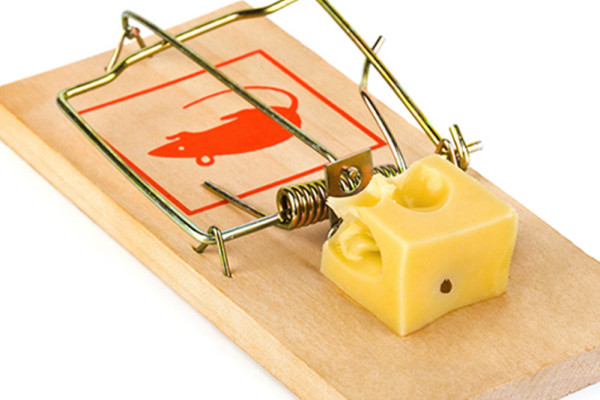“Would you like fries with that?”
Sadly, I think the vast majority of graphic designers are simply that: order takers. And it’s to the detriment of their clients, and their clients’ businesses.
Think about it. Your graphic designer—if they’re any good—is a design professional. What does that mean? Several things.
First, they most likely went to school to learn their trade. Just like a doctor or other working professional, they spent many years learning about and practicing their craft. They took courses on color theory, typography, Gestalt psychology, etc.
Unless you yourself also went through design school, you probably don’t really know much about these things.
But your designer does, and you should listen to them when they tell you that the reason your logo shouldn’t be bigger is because it will conflict with the main message. Or that putting small text on a busy background is a bad idea. Or your Fortune 500 company shouldn’t use Comic Sans. Ever.
Most trained designers also have a strong foundation in human psychology. What this means is, they understand how people see, read, and think about things. They understand what grabs the attention and holds it. They understand what makes something legible and what doesn’t.
While these types of things may seem easy to implement, the truth is they must be carefully planned and executed.
I’ve seen far too many eager clients offer feedback that compromised the integrity of the design, and made it less effective or powerful. Graphic design is not art, where your guess is as good as mine; it’s science with a creative bent.
Secondly, a good designer has years of experience working with real-life business problems, and coming up with the solutions. After all, graphic design is about meeting business goals, NOT making you feel good.
For example, let’s say I do an audience analysis and found that blue, green, and purple appealed to your audience of primarily middle-aged women. But you want your brochure to be orange because that’s your favorite color. It just so happens that orange is hated by most women. And if I were an order taker type of designer—I call them pixel-pushers—I would make your brochure orange anyway, while you wonder why you’re losing business.
It’s all about the audience
This sounds harsh, but I tell all my clients this: I don’t care if you like whatever it is that I’m designing. I don’t even care if I like it.
What I care about is whether or not the design resonates with the audience.
Because it’s the audience—your target market—who decides whether or not to buy your product or services. Not you, and not me. That’s why design is ultimately about meeting business goals.
Imagine this scenario: the breaker in my house goes caput. I call an electrician. They arrive and start going to work, while I hover anxiously. “No, don’t connect the blue wire to that red wire,” I instruct him. “I think all the blue wires should go together.”
Now, I’m not a trained electrician, so I think we’d all agree this should never happen. (I don’t even know if a breaker has blue and red wires.)
I hired the electrician, who’s a professional, to do what I don’t know how to do. Most normal people would let him do his job, since he’s good at it. My part in this is to show him what went wrong, and trust him to fix it, according to his best judgment.
Why on earth do we think it’s okay to treat designer professionals any differently?
Always right?
I think the problem is that we live in a customer centric culture. Don’t get me wrong, there is nothing bad about delivering good customer service.
But it’s gotten to the point where we give real validation to the mindset that “the customer is always right.” Well, a lot of times they’re not.
Just like with the above example of the electrician, should he have listened to the customer and crossed the blue wires? Even if it made the whole electrical system catch on fire? Likewise, as a designer, should I follow every opinion a client provides? Even if it means they’ll lose money over the long haul? This is why being an order taker designer is bad for both the designer and the client.
I know what you’re thinking: “So should I not provide any feedback on my designs?” Absolutely you should provide feedback.
And that’s what we’ll talk about next week—how to give your designer the right type of feedback, so that you’re both happy and that your business goals are being met. Because that’s what it’s all about.





21 Comments. Leave new
Great article!
Even though I am a junior and don’t have a respective amount of experience under my belt just yet, I have had clients go against what I suggest would look good for their business or their customer’s business, and it completely loses the message.
I really like that quote you have given: “…graphic design is all about meeting business goals, NOT making you feel good.”
Why can’t more clients understand this?
Will suscribe to the newsletter for sure!
Kind regards,
Tasha
Hi Tasha,
thanks for reading! I’m sorry to hear that you’ve already noticed this trend early in your career, I’ve had the same problems since day one. Doesn’t get much better unfortunately, but it does get easier to qualify better clients.
Thank you for subscribing! Let me know what you think 🙂
Take care
Excellent blog! I’ve been a designer for 30 plus years and I often run into this situation, especially with new clients. My regular clients realize I’m a professional and trust me to work with them even though it sometimes means I tell them their idea isn’t in their best interest and that is why I recommend an alternate solution. Love the title of this blog, as well. And I want to compliment you on your website!
Hi Mary,
Thanks for reading, glad to hear your regular clients respect you now as a professional! And thank you for the compliments, I appreciate it! 🙂
Speaking Truth To Foolishness. Well Done. Carry On.
LOL, thanks, DK!
Great article! So refreshing to hear someone state how and why our profession is faltering and what we as designers can all do to help.
Thanks, Kerry, glad you enjoyed!
Recently, I worked with 2 clients I like and have worked with a lot before. Both had done some creative thinking beforehand and were pretty certain exactly what type of imagery and font style they wanted. Fair enough, we all thought this would speed up the process…except I spent too much time trying to make these ideas work for their logos and not enough using MY range of creative skills. I came up with better ideas in the end; but most of the process felt like wasted time and effort. I will try to avoid those situations in the future by advising that “our” process, together, will likely produce “new” ideas; I’m not just ‘building their idea, and they (clients) will come’! thanks for article!
Great point, Catherine, that’s what clients oftentimes fail to understand. When we attempt to implement their limited ideas, it just wastes time and money, instead of exploring stronger options. Sometimes it works, most of the time it doesn’t. Thanks for sharing!
Great article the whole way through Sheila. Like you said, the designer has the background knowledge and experience, designing according to certain principles. They are not basing designs necessarily from their opinion. Far too often, other’s opinions are pushed and followed, thus detrimental to the creative and it’s purpose. I particularly liked the comparison to an electrician, that was perfect.
Totally agree, Joe! LOL, I know, right? That’s the thing, no one would every even think about questioning other professional service providers; it’s ludicrous when you think about it
A truly intelligent, articulate and accurate post. Thanks!
As a web designer, my two most problematic clients have both been Interior Designers. They wanted to art direct every element of their sites — move this, change this, add this, use this font here and that font there. What I (unsuccessfully) tried to explain was that their expertise was in bringing many diverse elements together to create a unified whole. In contrast, web Design is a process of designing and arranging everything to create a flow. A flow of ideas, images, animation and words that lead the user to one conclusion – “Yes, I want this person to design my home.”
Both relationships became antagonistic and I ended up submitting to the role of “wrist.” I took the money and kept my mouth shut. Both websites ended up fragmented and largely incoherent. Neither of the clients was truly happy with the results. And naturally, they blamed me for it.
All that being said, most of my clients are as responsive and agreeable as the websites I’ve designed and built for them. And they were all shocked at first, but got it when I said early on, “It doesn’t matter what you like. It doesn’t matter what I like. All that matters is what a potential customer is going to like and respond to.” Just like you said …
Thanks again for a great post!
Thank you for the kind words, Jerry!
VERY interesting difference you noted, about how as interior designers they were more concerned about the unified whole vs. user experience (the flow) of a website. Never thought about it that way before, but you’re totally right.
Thanks for reading!
BTW, love love your website!! It’s killer 🙂
Exactly, and sometimes you have to explain the “no shirt, no shoes, no service” policy. I recently had the experience of having to deal with a client who had resulted to cursing when demanding changes every few days to suit their needs.
I finally told them that I dana business and unless they could communicate in an unpompous and professional manner I would have to be done with them.
The tones changed very quickly.
Good for you, for sticking up to them! I find that when I stick to my boundaries, a lot of times clients will fuss, but then ultimately comply.
Designers and clients will always agree or disagree on things. It all depends on how good of a seller you are to the client. Allowing the client to believe you are that type of designer who takes orders only from them without providing the necessary feedback is bad. It leads to unnecessary back and forth.
Unfortunately I think you are correct, Tiffany, a lot of our work as designers is the “sell.”
Elegantly put. Especially the part about how trained designers “understand how people see, read, and think about things.”
Appreciating the hard work you put into your blog and detailed
information you offer. It’s awesome to come across a blog every once in a while that isn’t the same unwanted rehashed
material. Great read! I’ve bookmarked your site and I’m including your
RSS feeds to my Google account.
Thanks for bookmarking, and your kind words! Glad you found my articles useful, I hope I don’t disappoint 🙂